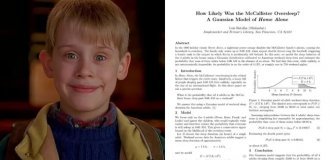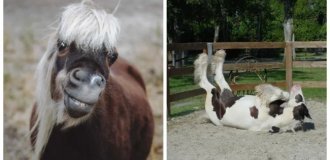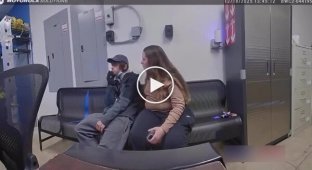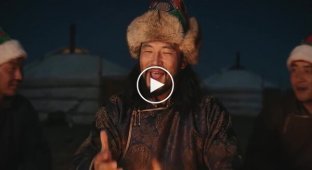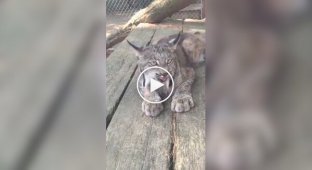Photographer of souls and thought forms Ippolit Baradyuk and his achievements (8 photos)
The existence of the soul is a topic about which representatives of various fields of knowledge have argued and continue to argue, from physicists and biologists to mystics and religious scholars. 
In parallel with them, disputes began regarding the possibility of capturing it. This man achieved some success in this. 
Hippolyte Baradyuk
The trend of photographing spirits appeared in the second half of the 19th century, leading many to believe that the ghosts of loved ones were near them. Creative photographers were opportunists, capitalizing on new environments and new beliefs. But the French physician and parapsychologist Dr. Hippolyte Baradiuk went even further. He claimed that he could photograph thoughts, emotions and even the soul. 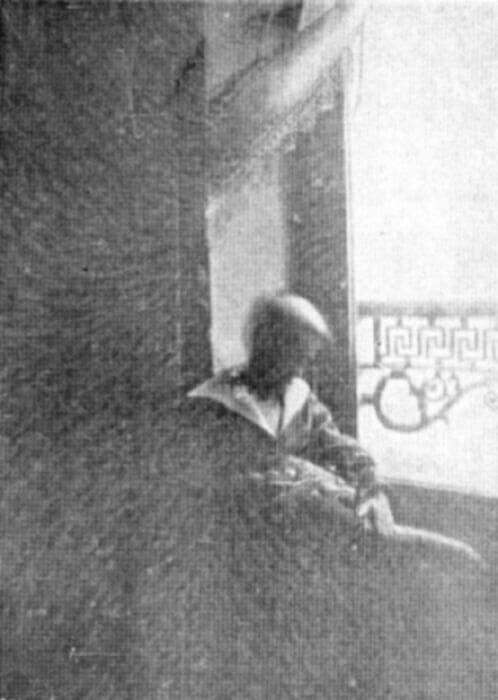
Baradiuk claimed that this 1896 photograph shows the "life force" surrounding a child
In 1896, he reported to the Paris Academy of Medicine that he had successfully photographed thoughts. According to reports, his method was extremely simple: “The person whose thoughts are to be photographed enters a dark room, places his hand on the photographic plate and thinks intently about the subject of which he wants to obtain an image.”
Most of the photographs provided by Baraduk as evidence were very blurry, but in some it was possible to distinguish facial features and the outlines of objects. 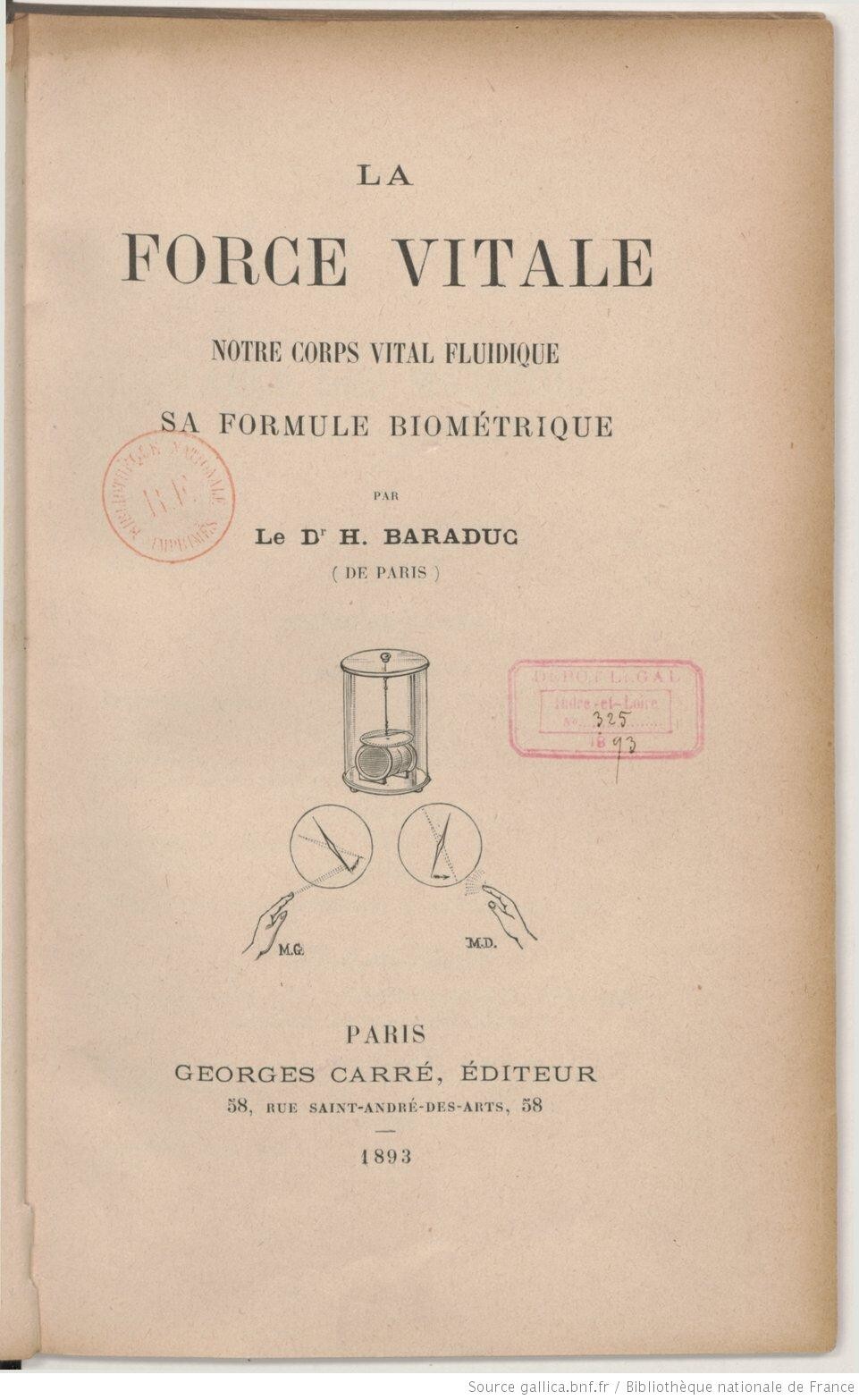
Baraduk's book
But he conducted tests not only on humans. “I conducted experiments on pigeons and also on fresh milk,” Baradiuk said. “Moreover, there is evidence that even plants are sensitive enough to make them suitable subjects for such experiments. A Portuguese friend of mine took photographs of several plants that he had just collected, but did not get any results. Then he tore them into pieces and crushed them in his hands. And this time he was not disappointed. The plate contained liquid impressions very similar to those obtained when the subject of research is a sick person." 
Hippolyte Baradiuk took this photograph of his wife 20 minutes after her death. The misty cloud he claimed was her soul
In April 1907, Baradiuk moved to a fundamentally new level of training.
His son, Andre, died at the age of 19. Nine hours later, Baradiuk photographed the coffin and discovered a misty cloud emanating from everything around it. Six months later, on October 15, Baraduk had the sad chance to continue his studies with his wife Nadine, now at her deathbed. 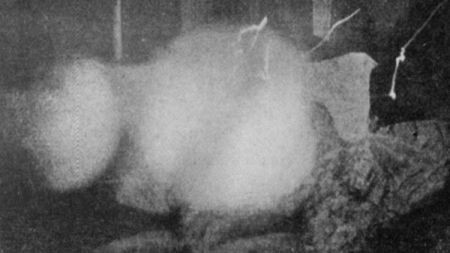
Baradiuk took another photo of his wife almost an hour after her death. On it, three foggy clouds form one large
Having prepared cameras for this event, he took a picture twenty minutes after his death, which, according to him, showed the departing soul. The photo shows three hazy glowing clouds above Nadine's body. A photo taken about thirty minutes later shows one larger cloud. Soon after, it left the body and floated into Baraduk's bedroom, creating an icy breeze before leaving it completely.
Baradiuk took another photo of his wife almost an hour after her death. Here three foggy clouds seem to form one large one. 
Hayward Carrington
Hyward Carrington, a writer and journalist, author of more than a hundred books on paranormal phenomena, considered the most authoritative American parapsychological researcher of the first half of the 20th century, spoke about these phenomena in his book “Problems of Psychical Research,” published in 1921:
There is no absurdity in this idea, as many may assume. Of course, the spiritual body must be material enough to reflect light waves, but where is the evidence that this is not the case? On the contrary, there is much evidence that it is. It must be remembered that the camera reveals countless things that are completely invisible to the naked eye or even to the eye aided by the most powerful glasses or telescopes. Usually we see only a few in the skythere are many thousands of shadows of stars with the help of telescopes, but the camera reveals more than twenty million! So here is direct proof that the camera can observe what we cannot see; and, indeed, this whole process of seeing or seeing is much more complex than many imagine. There is no reason why we couldn't photograph a spirit when we can photograph an image in a mirror that is simply vibrations, and reflected vibrations at that! In such a case we are far from the material thing; and yet we can photograph it with an ordinary camera. We will be able to photograph any disturbance on the air in a similar way. If only we have sufficiently subtle instruments and if the conditions for the experiment are favorable. The phenomena of spiritual photography and especially the experiments of Dr. Baraduk, to which I will now refer, would seem to point to this. 
Do you think it is possible to capture mental forms and other objects invisible to the eye in a photo?


